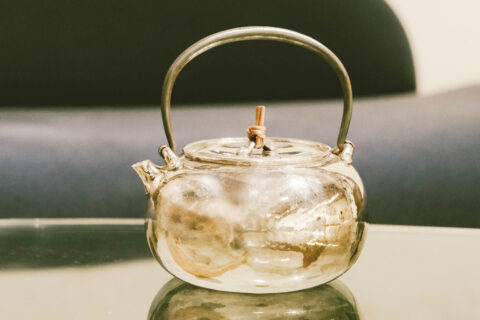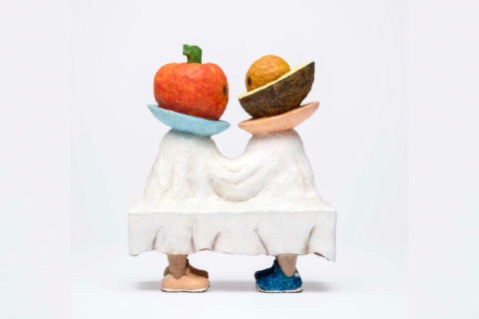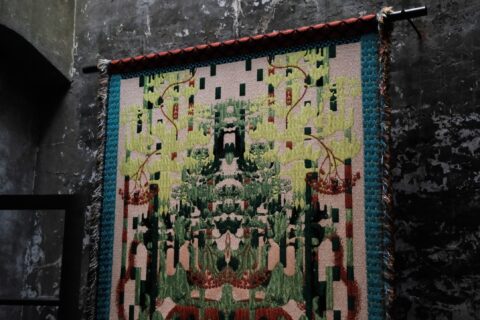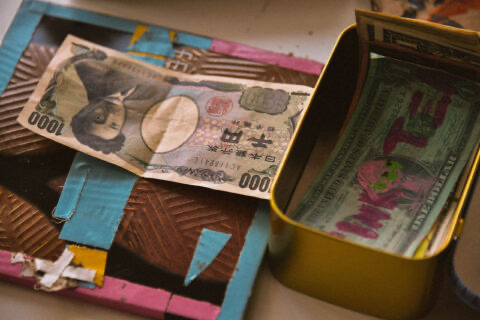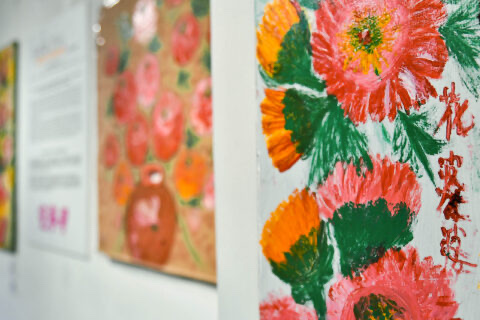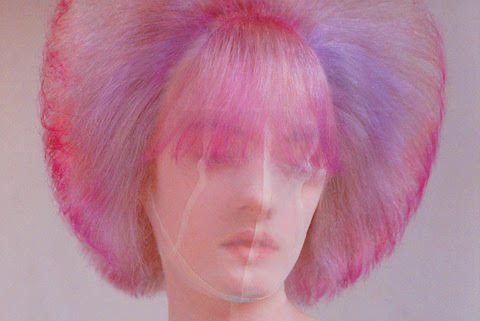
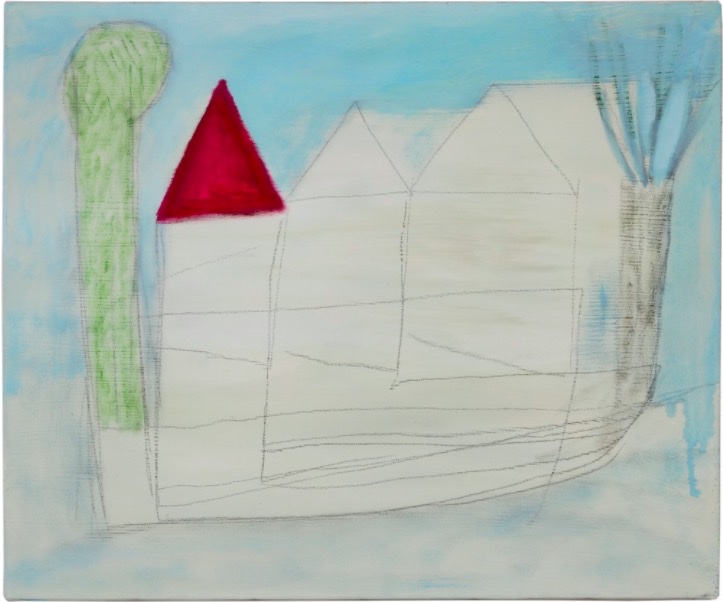
房屋與船和大海、樹木與雪和山林。杉戶洋的畫都是風景畫,幾何圖形的、粉紅的、嫰綠的、天藍的,色線與線條都是簡單的,有點稚氣,也有點混沌,說不清的情感起伏,彷彿是夢中的一片風景,嘗試在畫布上摹臨,希望將之描畫得俱像,卻始終含糊一片。
杉戶洋在1970年生於名古屋,因為父親的工作關係,童年一直都在美國。家內家外都說英語,14歲回國後,赫然發現自己與人溝通不良,不諳日語的他在自己的國家竟如異鄉人。那時開始,他便以繪畫作為表達自己想法的工具。16歲那年,他在學校裡遇上任客席美術教師的奈良美智,並透過他認識到Cy Twombly的作品,被其自由且有點放任的畫風所吸引,便決定日後以繪畫為業。
現在杉戶洋也不只繪畫,而其實很多時,即使是看似是畫作的,也超越了「繪畫」這媒介。早前他在東京都美術館舉行了在日本首個大型展覽,宣傳海報上,是他撿來的破舊信封,上面點綴了鮮艷的色彩。這作品,稱得上是畫作嗎?展場內展出的畫作,每幀都配上特別的畫框,畫作總比畫框小,他便在空罅內補上粉紅色的海棉。這是畫嗎?還是裝置藝術?另外,在後樓梯前立起來的大畫框,是否又是作品之一呢?
日文裡有一個字叫「脫力」,意指身體乏力,應用在藝術作品之上,就是形容它隨意隨性、沒有仔細經營。太過細致的作品有著教人震攝、鎖住呼吸的力度,而像杉戶洋般「脫了力」的作品,則令人呼吸放緩,思緒飄浮在作品凝造的柔軟氛圍裡。
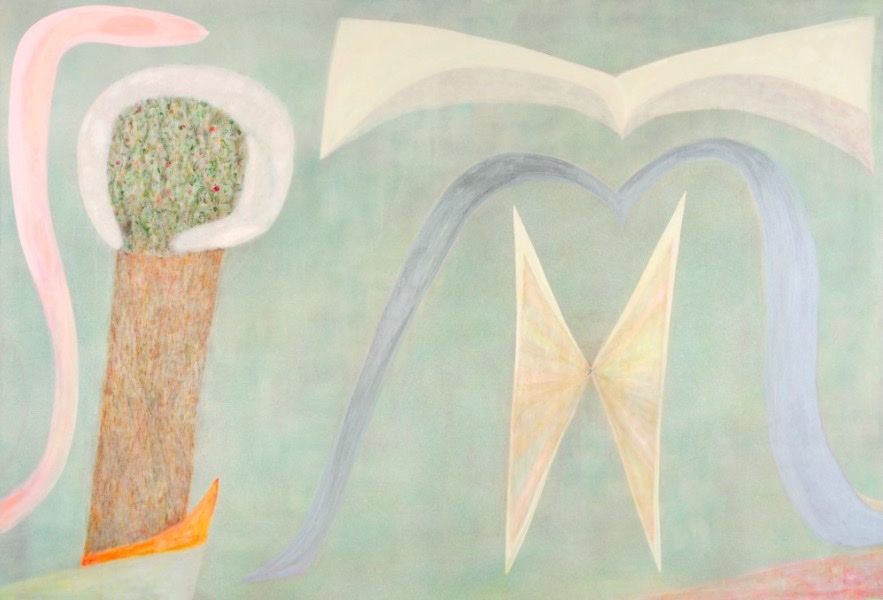
The works of Hiroshi Sugito often depict dreamy landscapes containing houses, boats in the vast ocean, trees, snow and mountain forests. Various shapes and contours seemingly frolic on his canvas amongst hues of pink, mossy green and sky blue, exuding both a child-like candor and a frenzy of energy. The ebb and flow of emotions in Sugito’s works are foggy and indistinct, as if striving in futility to capture the totality of visions from a dream.
Hiroshi Sugito was born in Nagoya in 1970. He moved to the United States as a child on account of his father’s occupation and spent the better part of his childhood and early teen years immersed in English. At the age of 14, Sugito returned to Japan, though his atrophied Japanese language abilities estranged him from the land of his birth, making him feel more like a foreigner in a strange land. It was from that point on that Sugito started to use painting express his thoughts and feelings. When he turned 16, he crossed paths with visiting art professor Yoshitomo Nara who introduced Sugito to the works of Cy Twombly. Sugito found himself drawn to Towmby’s debonair and almost indulgent style and became inspired to make painting and art his life’s profession.
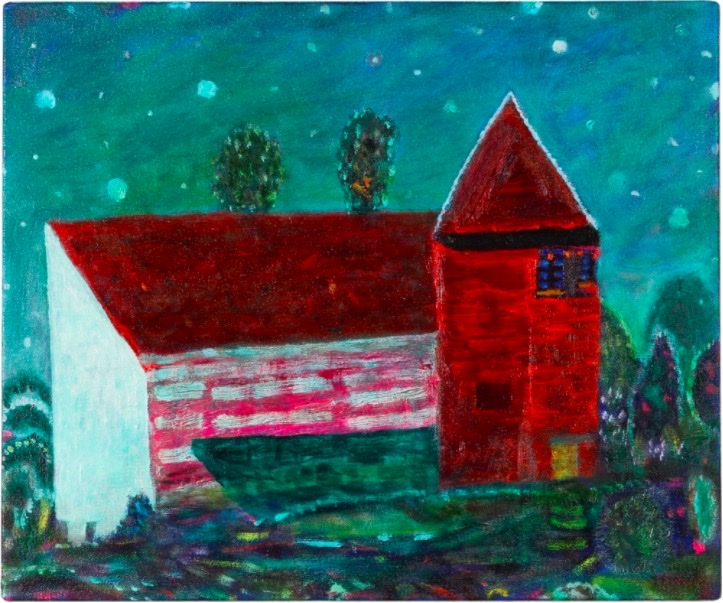
Sugito’s artistic expression has since expanded beyond just painting. Some of his works are clearly no longer confined to just drawing and painting as his medium of expression. For instance, many years earlier, Sugito held an art exhibition at the Tokyo Metropolitan Art Museum. One of the promotional posters for the exhibition showcased an old, worn-out envelope which Sugito bedecked with an array of bright colors. This did not seem to conform to the traditional notion of a painting. Some of his other pieces in the exhibition were placed in a specially designed frame which was always larger than the pieces they encased. Sugito filled the spaces that existed between the pieces and their frames with a crimson spongey material, making these pieces more akin to installation art than paintings. There was also a large portrait frame situated in the back stairwell of the venue which curiously looked like yet another one of Sugito’s works.
In the Japanese language, “datsuryoku” literally means the release or loss of physical power. When applied to art, it refers to the unrestrained and nonchalant style of an art piece. In contrast to overly intricate and meticulous works of art which often astound but suffocate, Sugito’s “datsuryoku” style provides a breathable experience and is able to engross the beholder’s thoughts in a gentle and calm ambience.
